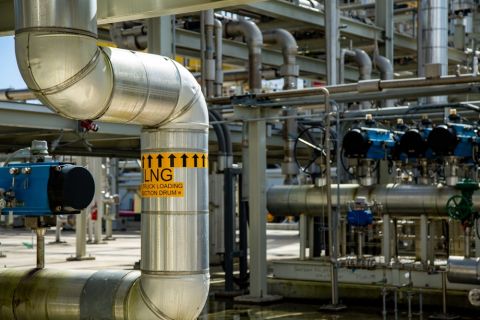I?n this era in which operators are scrambling to tap tight-gas and shale-gas reservoirs, they have come to rely heavily on fracture stimulations to make their wells flow. Strong success is possible, so much so that Lower 48 gas production has surged in the past 18 months.
But not all formations are alike, nor will all wells within a single field respond similarly to frac treatment. Success does not necessarily follow the application of horsepower.
No one knows this better than Joe Frantz Jr., president and chief executive of Unbridled Energy Corp., a Canadian public company with offices and assets in Alberta and the Appalachian Basin. Frantz, based in Pittsburgh, has an affinity for technology. “We believe in cost-effectively using technology upfront, to better determine where to drill and how to complete our wells,” he says.
In a departure from the tight-lipped code traditionally practiced in the oil patch, Frantz adheres to a personal philosophy to widely share field results when acreage positions are secure.
“That way, new ideas can spread more quickly throughout the industry to the benefit of all operators. I’ve seen this philosophy work extremely well in other plays. It’s another means to be good stewards of industry resources.”
Appalachian potential
Unbridled acquired an interest in Lakeshore Field in Chautauqua County, New York, in March 2007. The Silurian Medina field held 61 wells, most dating back 20 to 25 years. The Medina consists of very hard, well-cemented tight sands that are the traditional gas pay in the region. It contains two sandstone packages—Grimsby and Whirlpool. The reservoirs are quite tight, and wells have to be hydraulically fractured to produce at economic rates.
“We bought the property at a reasonable price, low at today’s standards,” says Frantz. Unbridled partnered 50/50 in the venture with H.H. Allegiance Energy. The companies wanted to exploit the Medina’s low-risk development potential, and thought there were wells to be drilled on normal spacing, in addition to infill wells.
The property also contained recompletion candidates, an oil formation, a new shale-gas target and deeper-pool potential. “We saw enough long-term potential in a number of formations to be excited about using technology in the field, since very little had been used in the past.”
Clearly, Lakeshore Field possessed upside. Schlumberger Data and Consulting Services performed a reserve study for Unbridled, and determined that the company could potentially have hundreds of locations to drill.
The long production history afforded Unbridled plenty of data to analyze, and it was apparent that well recoveries were erratic. Before it launched a major drilling program, especially for a company of its size, Unbridled wanted to understand what was causing the variable production results.
The Unbridled team took up the task of figuring out the cause of the fitful recoveries: It sought to determine if well behavior was related to intrinsic reservoir properties, or rather to the effects of fracture treatments. The company dedicated several months to study options to solve the problem, and involved service companies and area operators.
“Our strategy was to more fully understand the reservoir, especially extremely basic things like porosity, permeability and hydraulic-fracture geometry,” says Frantz. A fundamental approach, certainly, but a step often skipped by companies working in vintage Appalachian fields.
Unbridled worked with service company Universal Well Services and local geologist Brad Gill to analyze all historical production data, completions and logs. Out of this effort came new well locations, geologic maps, a hydraulic-fracture model, a new fracture-treatment design and a list of recompletion candidates. It also reviewed some existing microseismic results and stress profiles in the basin to provide an initial estimate of expected hydraulic-fracture geometry.
“Our study led us to believe that fracture treatments pumped in old wells may not have stimulated the formations effectively,” says Frantz. The hydraulic fractures may not have propagated out much, and could have grown downward instead. However, from its initial analysis, the company still didn’t know permeability, or the degree that natural fracturing played in well results.
It did believe that creating a long fracture was the best means to improve production in future wells, and even possibly in existing wells.
Microseismic project
Unbridled and Schlumberger Data and Consulting Services approached the New York State Energy Research and Development Authority (NYSERDA) to fund some of the data collection. Results of the entire project will eventually be disseminated to the industry.
In May 2008, Unbridled collected an openhole dataset and performed microseismic imaging during stimulation of its #1 Mittlefehdlt, a 4,300-foot Medina test in Lakeshore Field.
“I don’t know if a Medina stimulation had been imaged in New York before,” he says.
 |
| Unbridled Energy's Lakeshore Field in western New York produces from shallow gas-charged sands in the Medina that require fracture treatment to achieve economic rates. |
What Unbridled saw was surprising. Instead of fractures propagating as expected in an elliptical line into the rock, some fractures went in a different direction. What the stimulation created was a cube-shaped area (950 feet long, 600 feet wide and 500 feet high) of complex fractures.
“It is likely that this pattern was caused by localized natural fracturing around the well,” says Frantz. “Regardless, we stimulated quite a bit of the reservoir and hopefully reduced downward growth compared to old treatments.”
Advanced logs were used to calibrate the hydraulic-fracture model and then match the treating data. (Of course, the actual complexity of created fracture geometry is beyond any frac model.) Another piece of important information determined from core analysis was that matrix permeability was lower than Unbridled had thought, thus supporting the need for “cracking” as much rock as far as possible during the stimulation treatment.
Unbridled’s completion and fracture treatments were a new design for this area. Fracture treatments are a complex interplay of many variables, including number and placement of perforations, pumping rates, fluid types and sand compositions.
The company engineered a custom approach. It perforated one interval high in the section to reduce complexity at the wellbore. The treatment was started by pumping water (thin-viscosity fluid) in an attempt to reduce downward growth of the induced fractures. The operator ran 100-mesh sand in the water, and then shut down to let the sand settle out to the bottom of the created fracture.
“The thought was the 100-mesh sand would act as a downward barrier when we reinitiated pumping of the next fluid,” says Frantz. That was a thin, foamed fluid designed to carry 30/50-mesh sand into the created fracture.
Schlumberger’s microseismic team intensely studied the data to verify the created fractures, since results were so different than expected.
The analysis also indicated that the majority of the created fracture occurred very early in the treatment, which further supported the idea that the treatment interacted with existing natural fractures, and filled them with proppant.
Overall, based on post-stimulation flowback and initial production results, the new stimulation method worked well.
Useful results
The project has yielded quantifiable results: Unbridled has drilled and completed six tight-gas Medina wells with its new stimulation technique, and these are tied into sales. The wells exhibited initial rates ranging from 70,000 to 130,000 cubic feet per day, rates that are superior to those observed from older wells stimulated with outdated techniques. The operator also used its custom technique to restimulate four existing wells, and noted favorable results.
To date, Unbridled has identified more than 60 locations on its 15,000 acres in Chautauqua County. If a future infill program is successful, that could blossom to hundreds more. The company is currently permitting new drillsites and has more than 20 recompletion candidates among its existing wells.
“The Medina appears to be a reliable cash-flow asset for us,” says Frantz. An extra benefit: Gas in this part of the country fetches a $0.40-to-$0.80 basis premium to Nymex prices per thousand cubic feet, and Unbridled has a good portion of its production hedged at prices north of $8 per thousand, plus the premium.
Additionally, the company plans to drill a deep well on the property in a separate joint venture. This will go to basement and allow the partners to test the Utica shale, Theresa sand and Trenton-Black River carbonates.
Finally, the property holds potential in a 250-foot section of Upper Devonian Geneseo shale at depths of 2,500 feet. The Geneseo has been cored and contains in-place gas of up to 39 billion cubic feet per section. Unbridled plans to recomplete an existing vertical well in the shale; if successful, a horizontal well is planned. The shale play spans the company’s acreage.
And, it’s not done with the Medina yet. “We’d like to run another microseismic test to determine if the first well is indicative of all stimulations, since the ramifications are important for well placement of future vertical and horizontal wells.
“Cost-effective data acquisition on a few initial wells can pave the road for improved performance in many new wells.”
Recommended Reading
PrairieSky Adds $6.4MM in Mannville Royalty Interests, Reduces Debt
2024-04-23 - PrairieSky Royalty said the acquisition was funded with excess earnings from the CA$83 million (US$60.75 million) generated from operations.
Diamondback Stockholders All in for $26B Endeavor Deal
2024-04-29 - Diamondback Energy shareholders have approved the $26 billion merger with Endeavor Energy Resources.
JMR Services, A-Plus P&A to Merge Companies
2024-03-05 - The combined organization will operate under JMR Services and aims to become the largest pure-play plug and abandonment company in the nation.
New Fortress Energy Sells Two Power Plants to Puerto Rico
2024-03-18 - New Fortress Energy sold two power plants to the Puerto Rico Electric Power Authority to provide cleaner and lower cost energy to the island.
Kimmeridge Fast Forwards on SilverBow with Takeover Bid
2024-03-13 - Investment firm Kimmeridge Energy Management, which first asked for additional SilverBow Resources board seats, has followed up with a buyout offer. A deal would make a nearly 1 Bcfe/d Eagle Ford pureplay.





